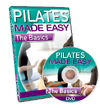By Martin Rossman, MD
A 27 year-old junior executive was having anxiety attacks at work and felt tired and flu-like much of the time. So he followed a guided imagery CD to help him relax and invite an image of his anxiety.
First, he saw a frenetic honeybee flying about in an agitated state. The bee was scattered and hectic, flying everywhere. Then the CD directed him to invite an image of his healing, and what came to him was a rose. He imagined holding the rose out to the bee, which came over and began drinking the nectar. As the bee took in this nourishment, it became more relaxed and content, as did the young man.
He began using this simple visual to calm and center him any time he began feeling anxious like his imaginary bee. His energy began returning and he began feeling vibrantly well.
Imagery is a flow of thoughts you can see, hear, feel, smell or taste. It is the expression of dreams and daydreams; memories and reminiscence; plans, projections and possibilities. It is the language of the arts, the emotions and, most importantly, of the deeper self. Everyone uses imagery.
When we worry, we’re using imagery unconsciously, and often to our own detriment. Imagining possible disasters, we react with physical and psychological distress all the time we are worrying. The excessive physical toll of habitual worry, with its accompanying “fight or flight” response, may lead to symptoms such as headaches, neck or back pain, or ulcers; to self-damaging behaviors like cigarette smoking, eating disorders, alcoholism, or drug abuse; or even leave us vulnerable to serious illnesses such as heart disease, hypertension and cancer.
The good news is that learning to use our imaginations consciously can be of great help in preventing or treating these symptoms and conditions. Using guided imagery can have positive effects on our heart rate, blood pressure, respiration, digestive function, sexual function and even our immune response.
“When I worry, I have trouble getting my mind off of it, even if it’s something I can’t do anything about. ‘Stopping’ my mind is hard, but shifting my attention to imagining myself being in a beautiful, peaceful place is pretty easy, and after I do that for a few minutes, I feel much calmer and more myself. I can think more clearly again.” Robert H., software engineer, 47, Burlingame, CA
All guided imagery is not the same, and principles I learned from developing a particular form called Interactive Guided Imagerysm can make imagery more personal, relevant, and effective.
Guided imagery describes a range of techniques from simple visualization and direct imagery-based suggestion, through metaphor and storytelling. It includes mind/body work in which the person enters into a dialogue with their own images to discover the meaning of symptoms or illness, alleviate distress and promote overall wellness. Guided imagery can also be used to help you learn relaxation, to relieve symptoms, to stimulate healing responses and to help you tolerate medical procedures and treatments more easily.
Guided imagery processes include both active and receptive imagery. Active imagery communicates your conscious intentions, or requests, to your unconscious mind. It consists of imagining your desired goal as if it is already achieved while in a relaxed passive state of mind. Receptive imagery helps you to become aware of unconscious patterns, needs and potential for change. Together, active and receptive imagery can help you create the healing imagery most appropriate and effective for you.
“My problem was severe pain in both forearms for over 3 years. Nothing helped, including physical therapy, splints, and opiate medications. Using a guided imagery CD, the image that came for the pain was steel rods in my arms. The CD asked me what qualities the rods had and I noticed they were rigid, cold, hard, and unyielding. It made me think of my grandfather, who I had cared for in his last years, who was just like that. The pain had started during that time. With my imagination, I asked him why he was like that, something I was never able to do in life. In my mind he answered that he was brought up to be like that, but that he loved me very much and appreciated all the help and love I gave him. I imagined that we hugged and could feel warmth from him. I cried so much I thought my heart would break. The next morning when I woke up I had about a third of the pain I’ve been having. I went to a grief counselor and had about six sessions, and continued to ‘talk’ to my grandfather in my imagery. I now have no pain and am on no pain medications.” Dorothy W., 48, Madison, WI
Imagery works through a two-way communication between the silent unconscious mind and the verbal conscious mind. It illuminates patterns that affect your health and guides you to focus energy that can change those patterns.
Using imagery, symptoms can be used to discover important needs that are not being met. Parts of ourselves that have been forgotten, unloved or neglected can come into view and be reclaimed. Emotions expressing themselves as physical symptoms can be understood, felt, and resolved, and the symptoms resolve as well.
Imagery is one of the most powerful, yet least utilized healing resources available in medicine. Other than nature or God, the human imagination is the most powerful force on earth. It can shape our environment, and our inner environment, more powerfully than anything else we know, if we learn how to use it.
A great deal of medical research over the last 40 years shows that imagery has a powerful influence on health, healing and well-being. It can help with a very wide range of illnesses and is compatible with any system of medicine or healing.
Guided imagery is easy to learn, effective, safe, affordable and accessible. Programs and lessons are available in CD, MP3 and other formats. They can be used alone in the comfort of your own home anytime they are needed.
Dr. Marty Rossman is a renowned leading expert and pioneer in mind/body imagery. He has taught clinical guided imagery to over 10,000 health professionals since 1982 and founded The Healing Mind to raise public and professional awareness about the power and effectiveness of high-quality mind/body self-healing techniques and to provide inexpensive, effective resources for using them. Learn more at www.thehealingmind.org.
Was This Article Helpful? Get More!
Every month we publish articles from health and fitness experts like Dr. Rossman in our premium Get Healthy & Fit® print newsletter.
Along with the monthly print issue, subscribers receive a special audio CD featuring an interview with a leading health and fitness personality – or even an occasional health and fitness DVD. Plus, members get instant access to every new issue, our entire archive of back issues, recent interviews and other special bonuses.
Why not take a look and see for yourself how my Health + Fitness Inner Circle can help you enjoy a healthier, happier, pain-free life? Just for giving it a try I’ll send you a copy of our Pilates Made Easy DVD, perfect for getting in shape fast!
There’s no risk and no obligation to continue your membership. The DVD and free issue are yours to keep whatever you decide.
Click here to get your Free Pilates Made Easy DVD and
Get Healthy & Fit® Free trial membership now!



